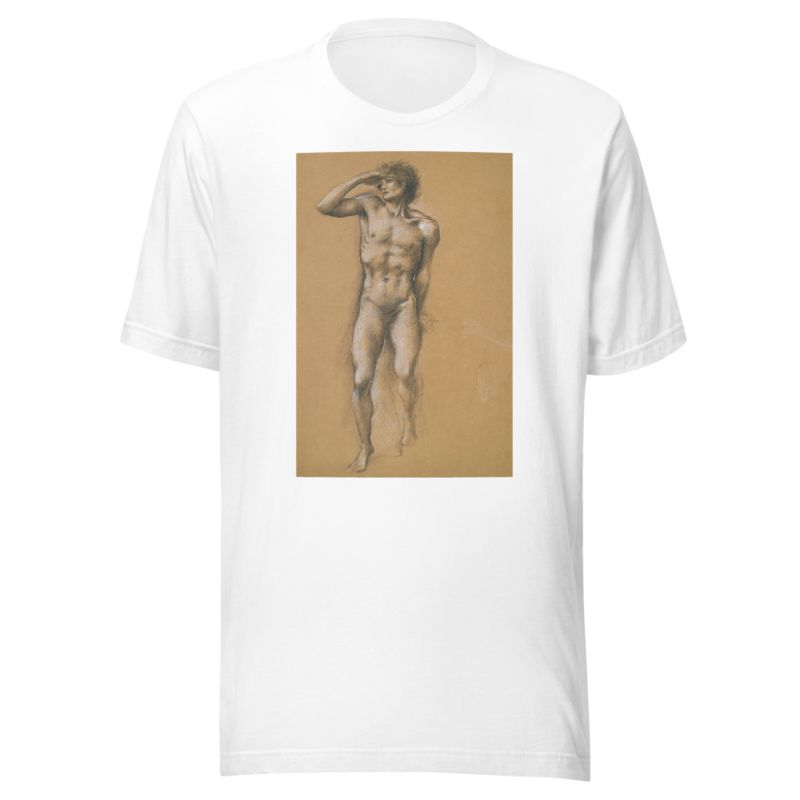Description
The Call Of Perseus by Sir Edward Coley Burne-Jones printed on a T-Shirt
About the T-Shirt
Regular fit
Standard length, the fabric easily gives into movement
Casual wear
A classic, everyday option loved by our customers
Side-seamed
Constructed by sewing two parts together, creating a fitted look
The Unisex Staple T-Shirt feels soft and light with just the right amount of stretch. It’s comfortable and flattering for all. We can’t compliment this shirt enough–it’s one of our crowd favorites, and it’s sure to be your next favorite too!
- Solid colors are 100% Airlume combed and ring-spun cotton
- Ash color is 99% combed and ring-spun cotton, 1% polyester
- Heather colors are 52% combed and ring-spun cotton, 48% polyester
- Athletic and Black Heather are 90% combed and ring-spun cotton, 10% polyester
- Heather Prism colors are 99% combed and ring-spun cotton, 1% polyester
- Fabric weight: 4.2 oz./yd.² (142 g/m²)
- Pre-shrunk fabric
- 30 singles
- Side-seamed construction
- Tear-away label
- Shoulder-to-shoulder taping
- Blank product sourced from Nicaragua, Mexico, Honduras, or the US
Sir Edward Coley Burne-Jones (1833 – 1898)
Sir Edward Coley Burne-Jones was a British artist and designer associated with the phase of the Pre-Raphaelite movement, who worked with William Morris on decorative arts as a founding partner in Morris, Marshall, Faulkner & Co.
Burne-Jones was involved in the rejuvenation of the tradition of stained glass art in Britain; his works include windows in St. Philip’s Cathedral, Birmingham, St Martin in the Bull Ring, Birmingham, Holy Trinity Church, Sloane Square, Chelsea, St Peter and St Paul parish church in Cromer, St Martin’s Church in Brampton, Cumbria (the church designed by Philip Webb), St Michael’s Church, Brighton, Trinity Church in Frome, All Saints, Jesus Lane, Cambridge, St Edmund Hall and Christ Church, two colleges of the University of Oxford. His stained glass works also feature in St. Anne’s Church, Brown Edge, Staffordshire Moorlands and St. Edward the Confessor church at Cheddleton Staffordshire. Burne-Jones’s early paintings show the inspiration of Dante Gabriel Rossetti, but by the 1860s Burne-Jones was discovering his own artistic “voice”.
In 1877, he was persuaded to show eight oil paintings at the Grosvenor Gallery (a new rival to the Royal Academy). These included The Beguiling of Merlin. The timing was right and he was taken up as a herald and star of the new Aesthetic Movement. Burne-Jones worked in crafts; including designing ceramic tiles, jewellery, tapestries and mosaics.






Reviews
There are no reviews yet.